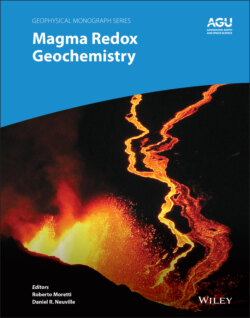Читать книгу Magma Redox Geochemistry - Группа авторов - Страница 51
Crystal Fractionation.
ОглавлениеCottrell and Kelley (2011) and numerous studies since (Birner et al., 2018; O’Neill et al., 2018; Shorttle et al., 2015), have shown how Fe3+/∑Fe ratios increase during low‐pressure crystal fractionation by a few percent, and that the fO2 of MORB glass spans a smaller range of fO2 (e.g., Fig. 3.2a) than indicated by wet‐chemistry. However, extensive crystal fractionation and crustal assimilation are commonly observed in magmas that transit thick arc crust, and this has been invoked to shift magmatic fO2 away from its mantle source (e.g., Chin et al., 2018; Grocke et al., 2016; Lee et al., 2005; Tang et al., 2018). The dearth of fO2 studies on the rare basalts and olivine‐hosted melt inclusions that transit the continental crust poses a challenge to the community. Insights can be gleaned, however, from extensive analytical work on magnetite–ilmenite pairs in more evolved arc rocks. In the arc crust, we observe that magnetite–ilmenite only precipitate once primary magmas have fractionated significant quantities of olivine and clinopyroxene (which remove Fe2+ from the melt), and magnetite–ilmenite pairs in arc lavas record slightly higher fO2s than primitive arc glasses, in accordance with this expectation (see Results, Table 3.1, and Fig. 3.2). Within the BABB suite, silica and fO2 do covary, although this relationship is demonstrably unrelated to crystal fractionation (Brounce et al., 2014). SiO2 and fO2 covary because of two independent phenomena: melting more hydrous mantle yields primary magmas with higher SiO2 concentrations (Kushiro, 1972) and melting mantle with more subduction influence yields primary magmas with higher fO2s and also more water (Kelley & Cottrell, 2009).
Figure 3.6 shows all of the volcanic data we have compiled as a function of both crustal thickness (from 7 to nearly 70 kilometers), SiO2 concentration (a proxy for crystal fractionation, ranging from ~45 to > 75 wt.%), and SiO2/Alkali ratios. We observe that magmas record fO2s in excess of ~QFM +1 only when the crust is thicker than that found in the ridge setting. However, from volcanics erupted through ~25 km of oceanic crust to volcanics erupted through nearly 70 km of continental crust, we observe no global correlation between crustal thickness and fO2. Neither do we observe a correlation between fO2 and silica content or SiO2/alkalis, within or among arcs. Figure 3.6 demonstrates that, to first order and on average, there is no simple relationship amongst the variables of crustal thickness, differentiation, and oxygen fugacity. Thus, while the relative influence of slab characteristics, the mantle wedge, and differentiation within the overlying crust on the geochemistry of arcs in the broadest sense remains an active area of research (Chin et al., 2018; Farner & Lee, 2017; Lee et al., 2013; Tang et al., 2018; Turner & Langmuir, 2015; Turner et al., 2016), thick crust and crystal fractionation are not necessary for the generation of oxidized magmas.
